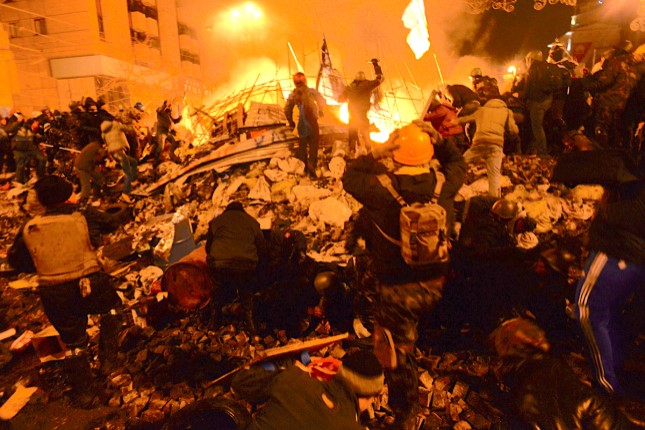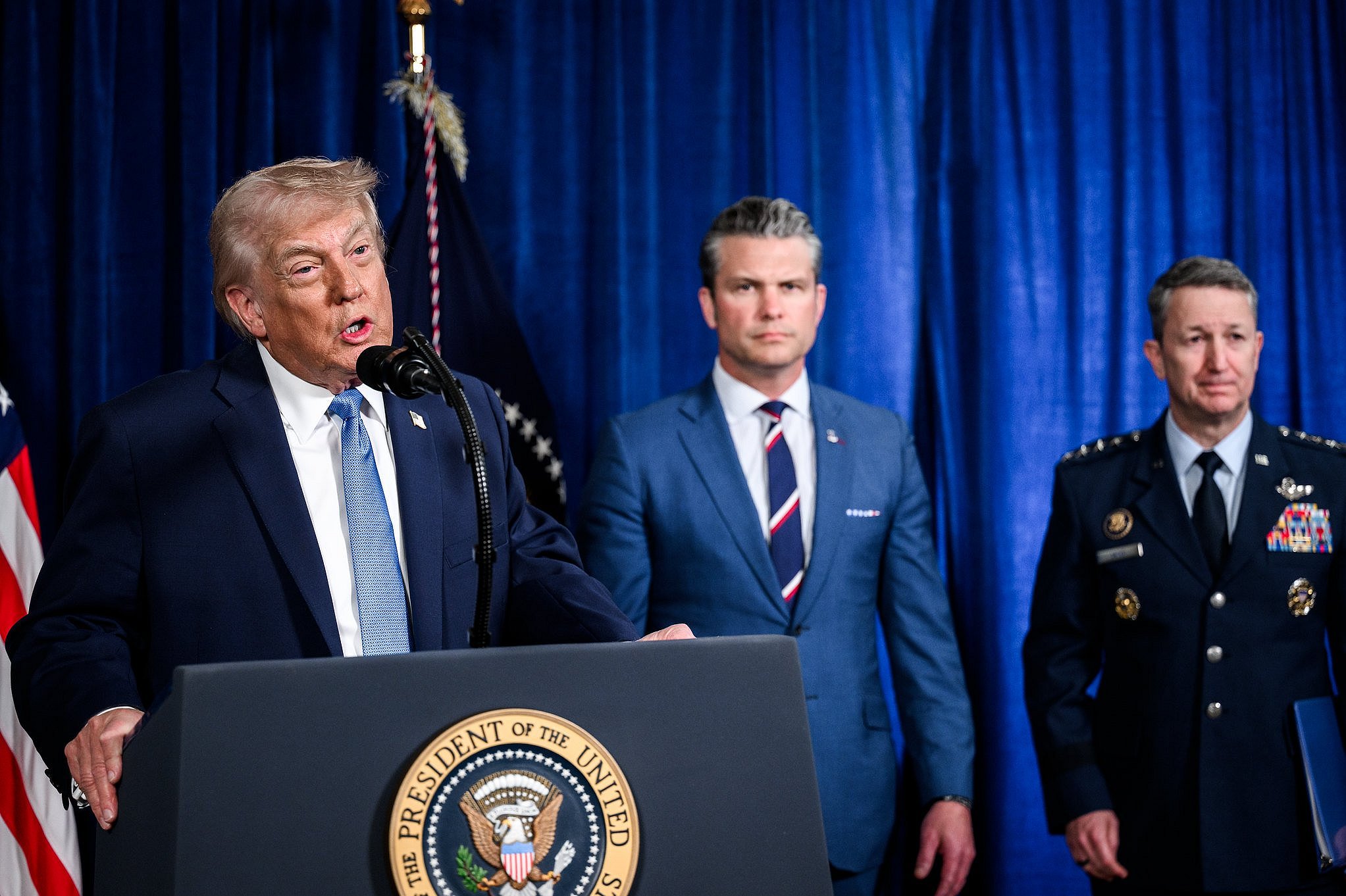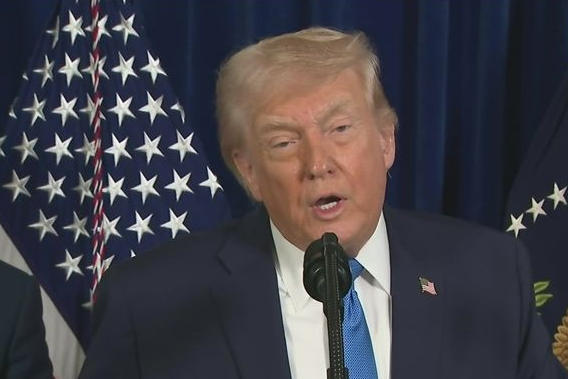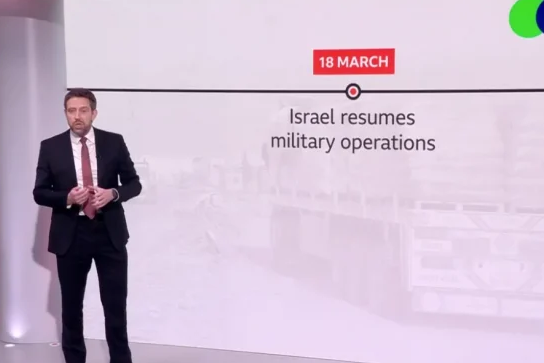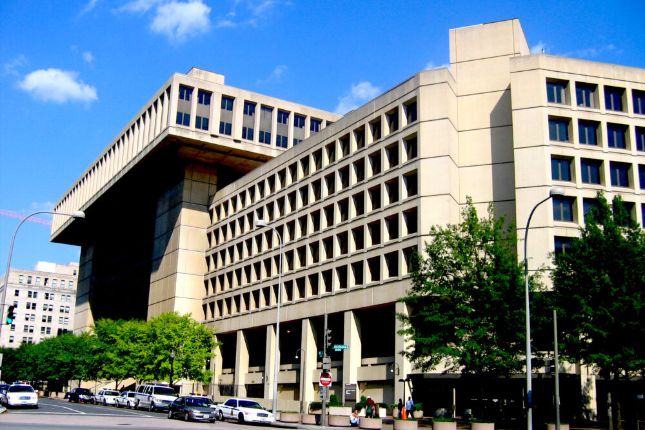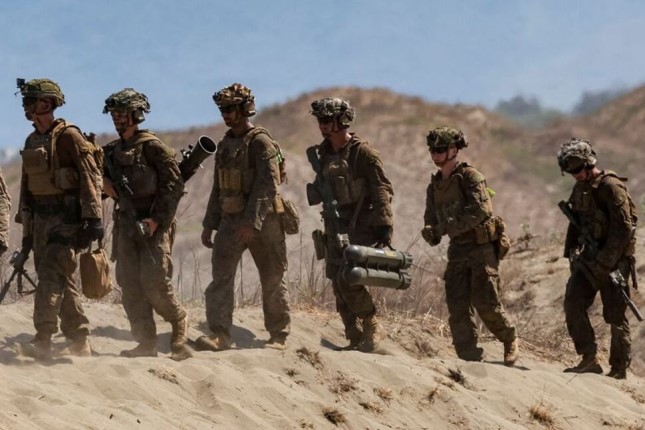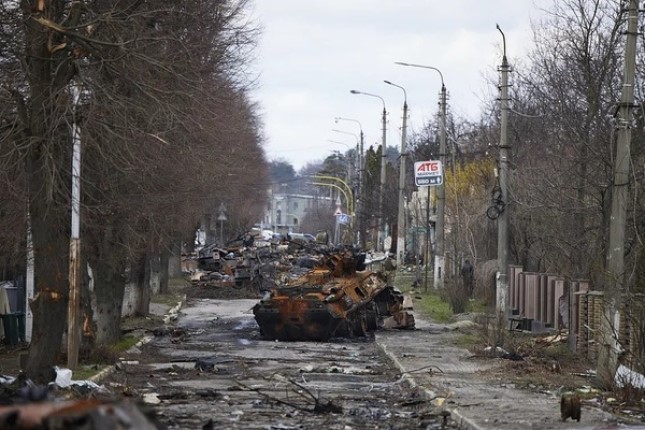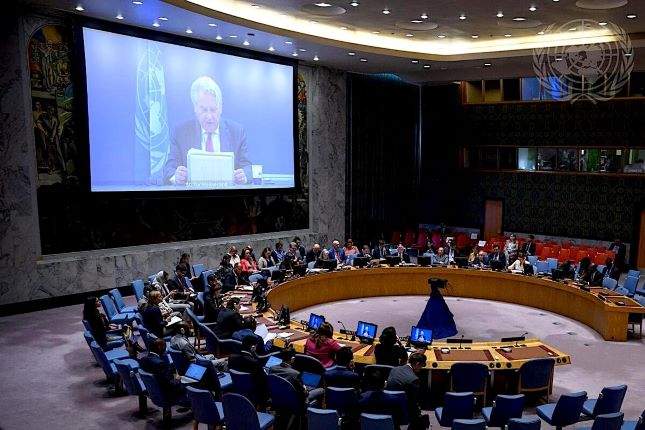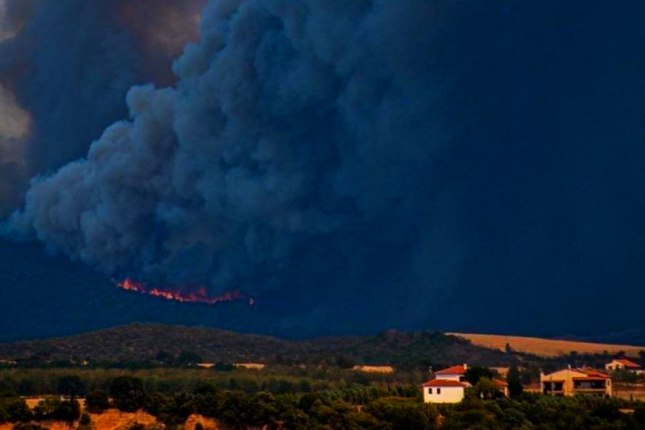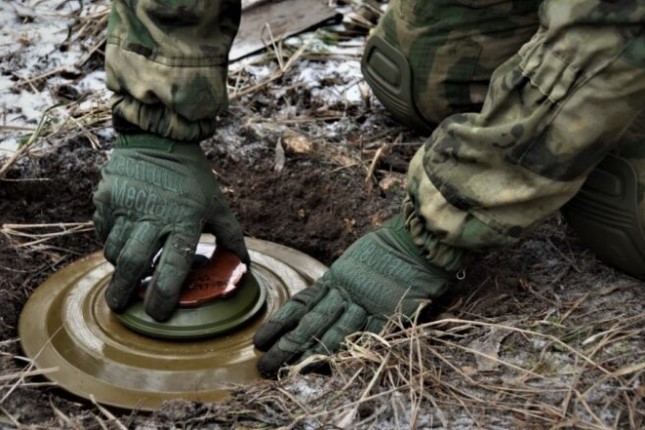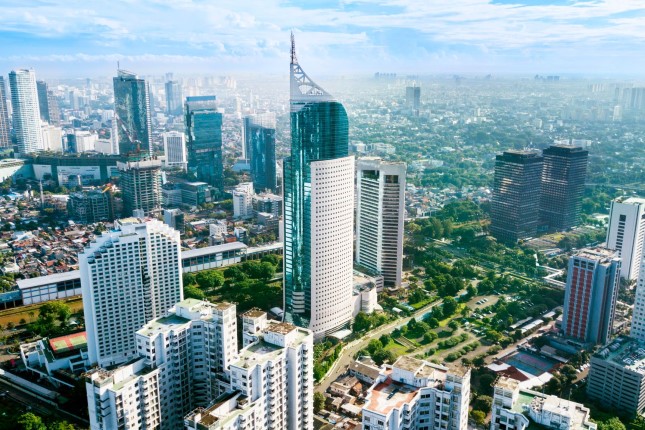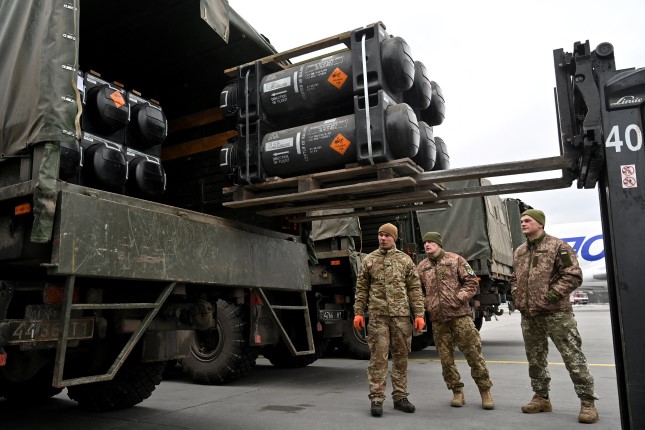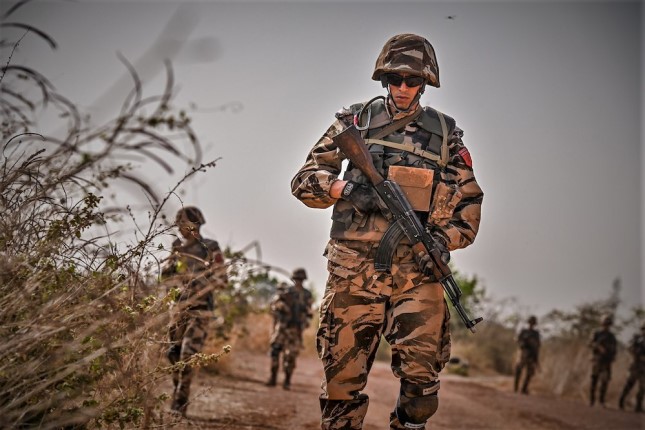Canadian-Ukrainian professor Ivan Katchanovski’s investigation of the Maidan massacre in Kiev in February 2014 found an organized mass killing of both protesters and the police, with the goal of delegitimizing the Yanukovych government and its forces and seizing power in Ukraine, as he wrote for Consortium News in an in-depth article in 2019. (On Wednesday three policemen were sentenced for the massacre, one was acquitted and one was released for time served. The official investigation ignored Katchanovski’s academic research.)
Natalie Baldwin: Tell us about your Ukrainian background and how you came to be an academic focused on the 2014 coup in Ukraine and the subsequent war?
Ivan Katchanovski: I was born in Western Ukraine. I became interested in politics and conflicts since I was about 10 years old, and I wanted to become professor since then.
The dangerous Cold War and my family experience were motivating factors. My family and I did not participate in any political parties, wars, or other armed conflicts. But politics and conflicts shaped our lives.
My mother lived in four countries and my grandmother lived in five countries without ever moving on their own. I grew up listening to recollections of my mother about her and her family survival during World War Two in Poland when she was a teenager and recollections of my grandmother about her experience as a small child of being a refugee during World War One. They always wished that there would not be another war.
Although I was interested in studying politics and read hundreds of books about politics of different countries, I could not pursue this formally since there was no such academic discipline in the Soviet Union.
The only department of international relations in Ukraine was in Kyiv University, and it required a recommendation from the regional committee of the Communist Party of the Soviet Union. I could not get such a recommendation, since I was not a party member. When the head of the local party committee asked me in 1985 why I am not joining the Communist Party, which was the only party in existence in the Soviet Union, I told her that I had not decided yet which party to join. But Petro Poroshenko [Ukraine’s post-coup president from 2014 to 2019] and Mikhai Saakashvili [former president of Georgia] were students in this department at Kyiv university at that very time, which means that they got such recommendations from the regional Communist Party committee.
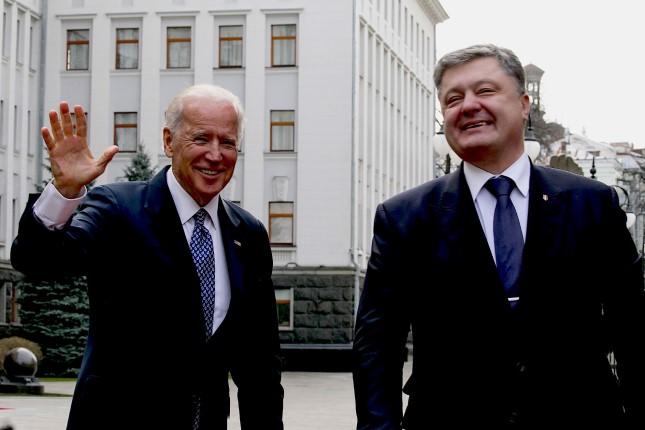
Poroshenko, on right, with U.S. Vice President Biden in Kiev on Dec. 7, 2015. Photo: U.S. Embassy Kyiv / Flickr.
While I was a student in another Kyiv university in 1988, I attended a small rally organized by the Ukrainian Helsinki Group. This smally rally with a few dozen participants was the first opposition demonstration in Kyiv in some 70 years. I also attended all rallies by Rukh and other Ukrainian organizations in Kyiv in 1988-1990. But I was in a very small minority. I supported the then and now multiparty system, freedom of the media, speech, assembly and rights of ethnic minorities and language rights.
I was threatened with expulsion from my university in Kyiv when I proposed to write my undergraduate thesis based on theories of Max Weber and Western economists. I also proposed to write it in Ukrainian, and the administration told me that I can write it even in Chinese. I wrote it anyway and concluded that the Soviet system was bound to collapse.
While I was not expelled from the university because [Mikhail] Gorbachev’s glasnost started making headway in Ukraine, I was given a “C” grade and could not pursue graduate education then because this required recommendation from the university from which I graduated.
After the Soviet Union collapsed in 1991, I was able to pursue my graduate education in the West. I wrote my PhD dissertation under the direction of Seymour Martin Lipset at George Mason University on regional political divisions and separatist conflicts in Ukraine and Moldova. This study, which I published as a book, predicted a real possibility of a violent break-up and civil war in regionally divided Ukraine, especially with pro-Russian separatism in Crimea and Donbas, similar to what happened in neighboring Moldova after de facto secession of pro-Russian Transdniestria Region with Russian military support following a civil war.
I specialized in the study of comparative politics, conflicts, and political violence in Ukraine since. I researched all major conflicts and cases of political violence in Ukraine since the end of the 1930s, including Stalin’s Great Terror; World War Two; the Nazi collaboration and mass murder of Jews, Poles and Ukrainians by the OUN and the UPA; and the “Orange Revolution.”
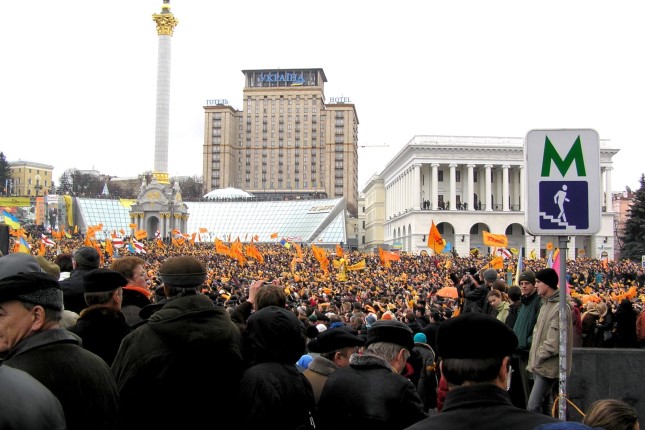
Orange-flag waving demonstrators in Independence Square in Kiev on Nov. 22, 2004. Photo: Serhiy / Wikimedia Commons / CC BY-SA 3.0.
Therefore, as soon as the Maidan started in 2013 and almost immediately turned violent, I started to research it. I published op-eds warning that the violence during the Maidan, specifically by the far-right, could lead to a violent break-up of Ukraine and a civil war.
But such a possibility was dismissed then by almost all scholars researching Ukraine. I was watching the start of the Maidan massacre live over several Internet streams, but on the next day I noticed that all recordings of these streams disappeared.
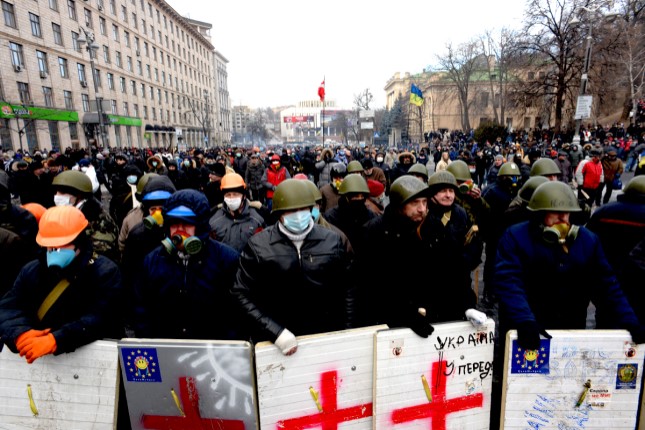
Helmeted protesters face off against police on Dynamivska Street during the Maidan uprising in Kiev, Jan 20, 2014. Photo: Mstyslav Chernov / Wikimedia Commons / CC BY-SA 3.0.
I researched the civil war and Russian military interventions in Donbas as soon as the separatist conflict in Donbas started following the violent overthrow of the Yanukovych government by means of the Maidan massacre and assassination attempts against Yanukovych.
Before the Russian invasion of Ukraine in February 2022, I warned in my publications, media interviews and social media posts about a real possibility of a war between Russia and Ukraine. I am researching this ongoing war now. My books on the Russia-Ukraine war and its origins, on the Maidan massacre, and on modern Ukraine are forthcoming from three major Western academic presses.
Baldwin: How did your investigation of the events surrounding the 2014 coup in Ukraine evolve and what are your conclusions?
Katchanovski: I researched the Maidan massacre for almost 10 years. I published a book chapter and two peer-reviewed journal articles on this massacre. Another of my articles on this crucial massacre is in press following very positive peer reviews by two experts. All these articles are open-access thanks to crowdfunding, and can be freely viewed, downloaded, shared, translated and republished.
My studies found that the Maidan massacre was a false-flag mass killing of the protestors and the police in order to seize power in Ukraine. It was conducted with the involvement of oligarchic and far-right elements of the Maidan opposition using concealed groups of Maidan snipers in Maidan-controlled buildings. The evidence shows this beyond any reasonable doubt.
Baldwin: It sounds like your work on these events has been censored. Please explain what challenges you’ve had in presenting and publishing your work and why you think this has been happening.
Katchanovski: My comprehensive article concerning the Maidan massacre was accepted for publication with minor revisions by a major peer-reviewed journal but then the decision was reversed in a clear case of political censorship. My appeal, with a supporting letter by Jeffrey Sachs, was rejected. Now the same article has been published as two separate articles in two other major peer-reviewed journals.
In retaliation for my academic studies of the Maidan massacre, my own house, land, and all property in Western Ukraine were seized by court decisions, which were issued on the orders from the top, despite all the documents and dozens of witness testimonies and in reversals of the decisions by the same judges and courts which confirmed my ownership. My house and all my property there have been damaged.
I faced ad hominem attacks, denunciations and defamation from a few researchers, most of whom are linked to the Ukrainian far right and obviously have vested interest in whitewashing the far right and denying their involvement in the false flag mass killing of the Maidan protesters.
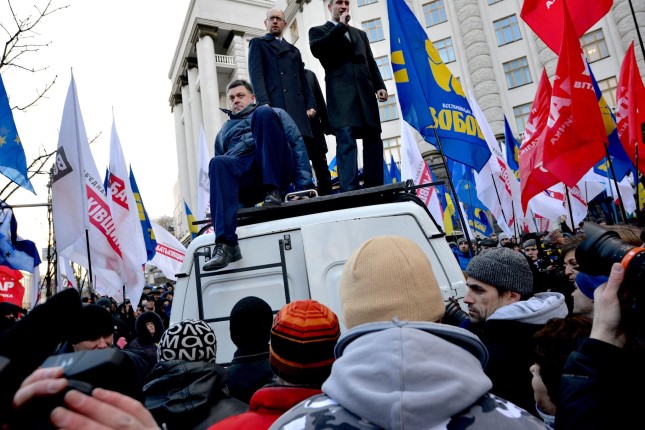
Ukrainian opposition leaders Oleh Tyahnybok, seated on van, with Vitali Klitschko and Arseniy Yatsenyuk, addressing Euromaidan demonstrators, Nov. 27, 2013. Photo: Ivan Bandura / Wikimedia Commons / CC BY 2.0.
A far-right activist linked to Svoboda, which my studies show was implicated in the Maidan massacre, was involved in the creation of several dozens of identical blogs and social media sites calling me “falsifier of the Maidan massacre.” It is telling that he used what he called “scientific anti-Semitism” to justify the OUN-led pogrom of Jews in Nazi-occupied Lviv.
A small group of Wikipedia editors resorted to similar defamation and fraud in order to whitewash the far right and the far-right involvement in the mass murder of the Maidan protesters and the police. They systematically whitewash the contemporary far right in Ukraine and their historical predecessors from the OUN and the UPA, and their Nazi collaboration and involvement in mass murder of Jews, Poles, and Ukrainians, and smear and defame many scholars of Ukraine.
They include editors who were identified by “Wikipedia’s Intentional Distortion of the History of the Holocaust” article by the University of Ottawa professor. Most of them are identified by various publications and online sources as academics, who are not experts in Ukraine but whitewash the far right and Maidan mass murders and smear scholars either because of political agenda or even possibly for pay.
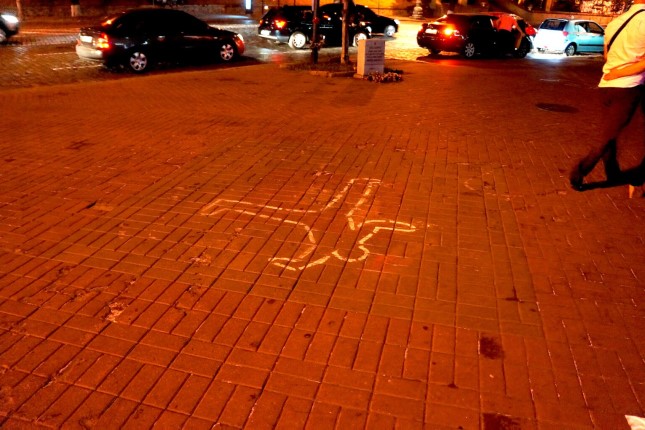
Silhouette of a victim painted on a sidewalk in Hrushevskoho Street, Kiev, July 2015, over a year after the clashes in Maidan square. Photo: Skoropadsky / Wikimedia Commons / CC BY-SA 4.0.
But my Maidan massacre studies were reported or cited, overwhelmingly positively by over 100 Western scholars and experts. Such leading scholars and experts as Richard Sakwa, (University of Kent), Professor David Lane (Cambridge University), Jeffrey Sachs (Columbia University), Jack Matlock (Duke University and the former U.S. ambassador to the Soviet Union), Stephen F. Cohen (New York University), Anatol Lieven (Quincy Institute), and many others in their peer-reviewed articles, books, and media publications either accepted my research findings concerning the Maidan massacre or [have] written favorably about my studies of this massacre.
Similarly, more than a hundred Western media outlets and over 50 Ukrainian media outlets positively reported or cited findings of my Maidan massacre studies: They include major American, Austrian, Canadian, Danish, Dutch, German, Greek, Italian, New Zealand, Norwegian, Spanish, and Swiss media outlets such as The Nation, Huffington Post, Courthouse News, Jacobin, Consortium News, Counterpunch, The Grayzone, Truthout, and Ukraina Moloda.
Their number is dozens of times higher than the few Western and Ukrainian media which attacked or denounced my Maidan massacre studies by resorting to outright fraud or the deliberate omission of overwhelming evidence revealed by my studies and the Maidan massacre trial.
But the absolute majority of the Western media deliberately does not report concerning findings of my studies of this massacre and various overwhelming evidence that this was a false-flag operation with the far-right involvement.
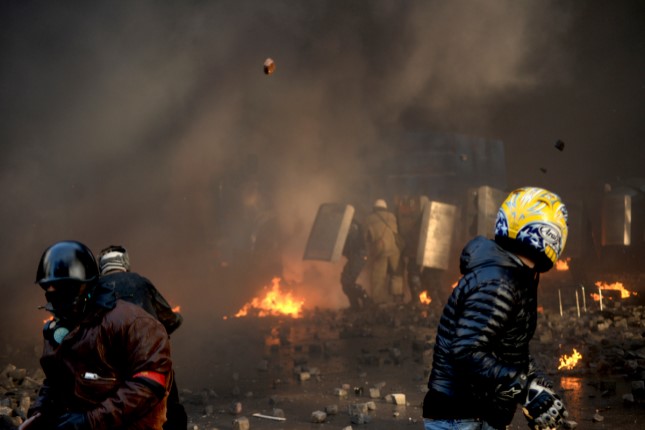
Feb. 18, 2014: Protesters throwing pieces of brick pavement at Ukrainian troops obscured by the smoke of burning tires in Kiev. Photo: Mstyslav Chernov / Wikimedia Commons / CC BY-SA 3.0.
In contrast, my interviews, comments and publications concerning my other research areas, such as the Russia-Ukraine war, the war in Donbas and World War Two, appeared in more than 3,000 media reports in some 75 countries. They include the following media: Associated Press, BBC Ukrainian, Canadian Press, CBC News, CTV News, Daily Express, France 24, Global TV, Globe and Mail, The Guardian, Hill TV, Le Figaro, National Post, Reuters, Times Higher Education, Toronto Star, Vice, Voice of America, The Washington Post, Euronews, Sky News Australia and CNN Brazil.
My research-based tweets and interviews concerning the standing ovation to the SS Galicia Division veteran by the Canadian parliament, the Canadian prime-minister and [Ukraine’s President Volodymyr] Zelensky were reported by several hundred media in dozens of countries and helped to make it the top story in Canada and one of major stories in the U.S., Poland and other countries.
There is also outright media censorship concerning my Maidan massacre research. A popular Polish media outlet Onet removed my interview following a request from the office of president of Poland. British OpenDemocracy accepted for publication in 2014 a popular version of my original study but did not publish it. A dozen of my interviews concerning the Maidan massacre were either not reported or canceled by major TV networks, radio stations and newspapers in the U.S., Canada and the EU.
My applications for research funding or research positions in Canada and the U.S. were denied since I first presented my study of the Maidan massacre in 2014, including during the current war, even though I am one of the most cited political scientists specializing primarily in the conflicts and politics in Ukraine and earlier held such research positions at Harvard, the University of Toronto, and the Kluge Center at the Library of Congress.
I published four books, 20 articles in peer-reviewed journals, and 12 book chapters, and have three forthcoming books on Ukraine. And I am one of a few Ukrainian political scientists in the Western academy specializing in conflicts in Ukraine.
I was denied presentations in Ukrainian studies conferences in Canada and the U.S. One of the persons, who denied me a Canadian government-funded research grant, denounced me on Twitter for my Maidan massacre studies and suggested that she contacted my university demanding my removal. She is a professor specializing in Canada and not Ukraine but claims to know simply because she is from the Ukrainian diaspora.
I intended to use this large research grant to pay for open access publication of my articles and book. I used my own money to fund my Maidan massacre research, and I am thankful for ongoing crowdfunding support for open access publication of my articles and a book from over 100 donations.
It is simply astonishing and revealing that I am the one punished for my academic studies of the Maidan massacre, while mass murders of the Maidan protesters and the police are supported, whitewashed, and even glorified by the Westen governments, politicians, the media, and even by many academics.
Baldwin: You’ve talked periodically about investigations and court proceedings in Ukraine regarding the events surrounding the Maidan and the change of government that resulted from it. Can you tell us more about those court proceedings and investigations – how are they set up and what are they investigating? What are the most interesting revelations that have come out of them and do you think there will be any meaningful accountability for illegal and/or violent actions?
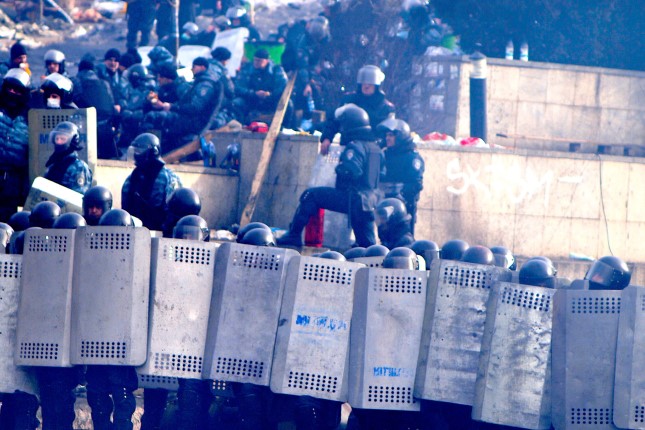
Ukrainian Internal Troops form a phalanx against protesters with Berkut special police grouped behind them. Photo: Amakuha / Wikimedia Commons / CC BY-SA 3.0.
Katchanovski: The Maidan massacre trial, which started in 2015, examined charges against five members of Berkut [a special police unit] who are charged with the massacre of the Maidan protesters on Feb. 20, 2014.
My recent peer-reviewed journal article and video appendixes show that the absolute majority of wounded protesters testified at the trial and the investigation that they were in fact shot by snipers from Maidan-controlled buildings or areas or that they witnessed snipers there.
Some 100 prosecution and defense witnesses and relatives of killed protesters also testified about snipers in the Maidan-controlled buildings and areas. This is consistent with testimonies by several hundred other witnesses and confessions by 14 self-admitted members of Maidan sniper groups.
Statements by the far-right Svoboda Party, videos and numerous witnesses show that the Hotel Ukraina and other buildings, which were locations of snipers who massacred the protesters and the police, were controlled then by the Maidan forces. My analysis of synchronized videos revealed Maidan snipers in these buildings during the massacre.
Forensic medical examinations by government experts showed that nearly all protesters were shot from the top, the back, and from the side directions, which match these Maidan-controlled buildings.
Government forensic ballistic experts determined that many protesters were killed or wounded from the Hotel Ukraina and other Maidan-controlled buildings or areas. A forensic ballistic examination by government experts with use of an automatic computer-based system found that bullets extracted from killed protesters did not match bullets from the Kalashnikov assault rifles of Berkut police. My analysis of synchronized videos showed that the specific time and direction of shooting by Berkut policemen did not coincide with the killing of specific protesters.
But the government investigation in Ukraine in a most blatant cover-up simply denies that there were any snipers in these Maidan controlled buildings in spite of the undeniable evidence. As part of such a cover-up, no one was convicted or under arrest for the massacre of the protesters and the police for almost 10 years after this massacre, which was one of the most documented cases of mass killing in history.
Crucial evidence, such as security cameras recordings, bullets, shields and helmets, “disappeared” or were destroyed. There is also tampering with evidence, such as bullets and forensic ballistic examinations, whose results were reversed without any explanation and contrary to videos, witnesses and forensic medical examinations. There is no trial for the killing of the police even though Maidan snipers, in particular, members of a far-right-linked group, publicly confessed in Ukrainian and Western media interviews of killing or shooting the police during the massacre.
Baldwin: Given that Ukraine is your family homeland, what is currently happening there must inform your work in a way that is different from other experts who may not have a personal connection. How has this war, both from 2014 and from 2022, personally affected you and your family?
Katchanovski: My relatives live in Western Ukraine which was not much affected by the war. One distant relative was wounded during the war in Donbas. My best friend, who lived then in Mariupol with his family, disappeared after the Russian invasion in 2022. We studied together at Central European University in Prague and communicated over Skype often when he was in Mariupol or taught in American universities in Iraq and Afghanistan.
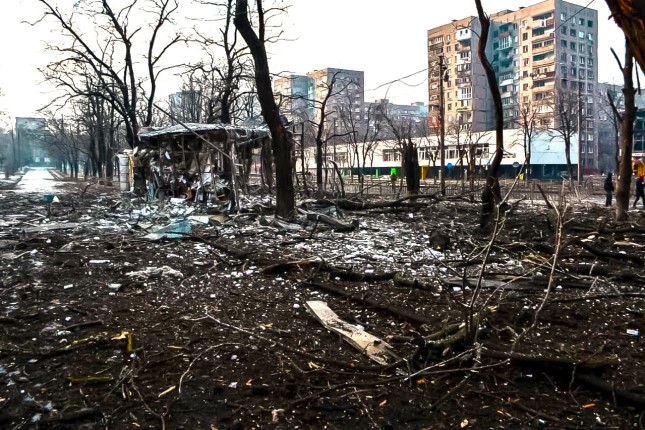
War-damaged Mariupol on March 12, 2022. Photo: Mvs.gov.ua / CC BY 4.0 / Wikimedia Commons.
Baldwin: You made reference on Twitter to a recent poll of Ukrainians living both in and outside Ukraine that found 43 percent of those in Ukraine and 36 percent of those in Europe disagree that Neo-Nazi ideology is not a significant problem in Ukraine. It also revealed that 29 percent of those in Ukraine and 35 percent of those in Europe disagree that the 2014 Maidan events were not a coup. Can you discuss these results and their significance given the western media narrative about what’s been going on in Ukraine since 2014?
Katchanovski: Since the poll question does not specify “no spread” as an answer, this poll means that 46 percent of respondents in Ukraine agree that Nazi/neo-Nazi ideology has a small spread in Ukraine, while 43 percent disagree, i.e. regard Nazi/neo-Nazi ideology spread as either significant or non-existent.
This poll, like other polls in Ukraine during the Russia-Ukraine war, underestimate responses that go against the narrative propagated by the Ukrainian government, in particular concerning the Maidan. Russian-annexed parts of Ukraine, including pro-Russian Crimea and Donbas, are excluded. There are also social/political desirability bias and fear to express views contrary to the official narrative of the Zelensky government.
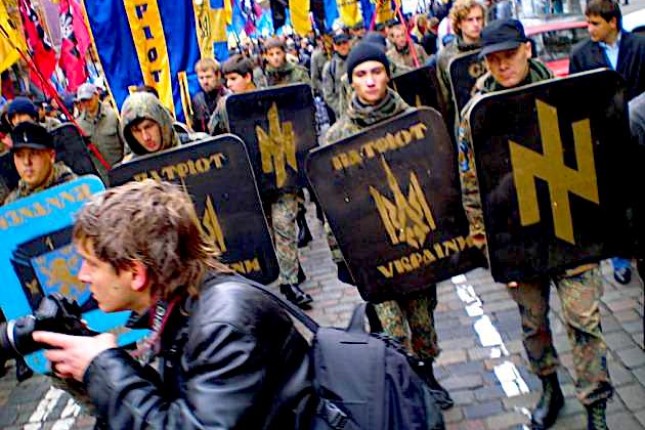
Protesters in Kiev with neo-Nazi symbols – SS-Volunteer Division “Galicia” and Patriot of Ukraine flags, 2014. Photo: CC BY-SA 3.0 / Wikimedia Commons.
The poll results show that contrary to the narrative propagated by Western and Ukrainian governments and the media, Ukrainians have different views concerning the Maidan and the far-right in Ukraine. But this poll also contradicts the narrative propagated by the Russian government and the media about Nazi or neo-Nazi regime in Ukraine since a “fascist coup” in 2014.
Baldwin: I’ve seen you mention on social media that there is a Neo-Nazi element in the Wagner forces. Can you tell us more about that? Does it have to do with a lot of them being convicts?
Katchanovski: It was Dmitry Utkin, the Wagner military commander, who used Nazi SS symbols as his signature and the name of the Hitler’s favorite composer as his nom de guerre, which became the name of the Wagner mercenary company. The Wagner company also included small “Rusich” unit, which was organized and led by Russian neo-Nazis.
Main photo: Protesters clash with police in Kiev, Ukraine, February 2014 © Mstyslav Chernov / Wikimedia Commons / CC BY-SA 3.0.
Source: Consortium News.
